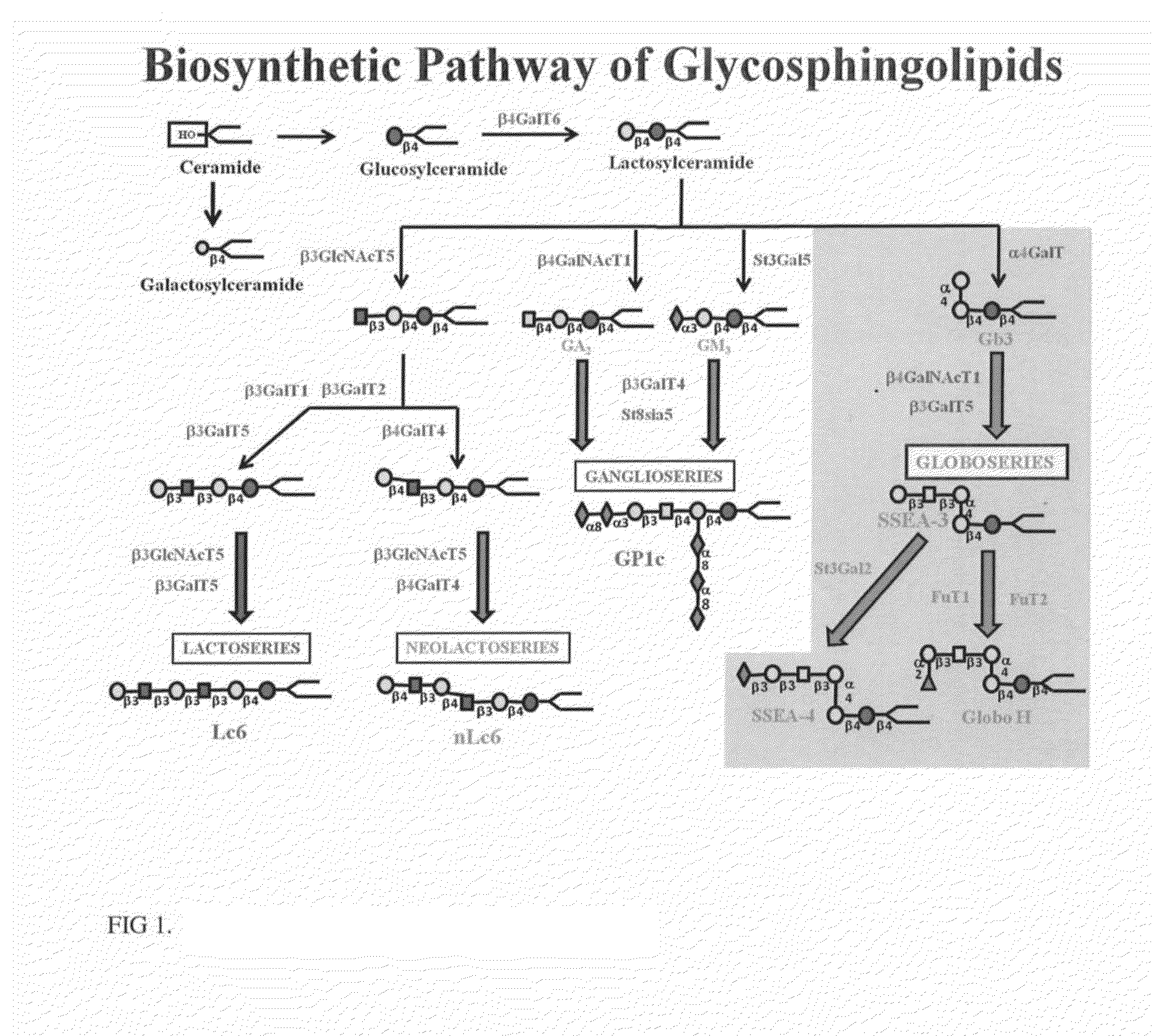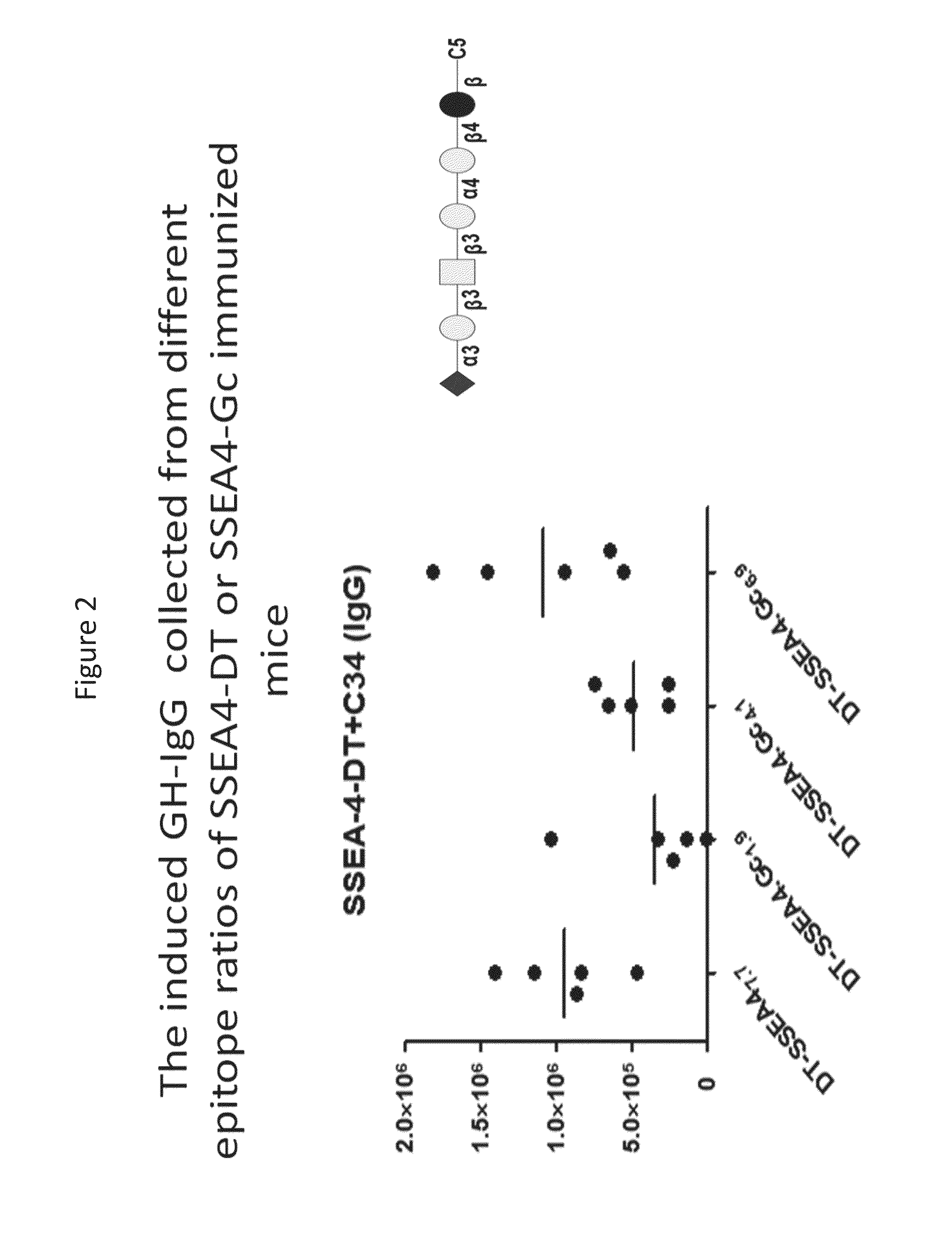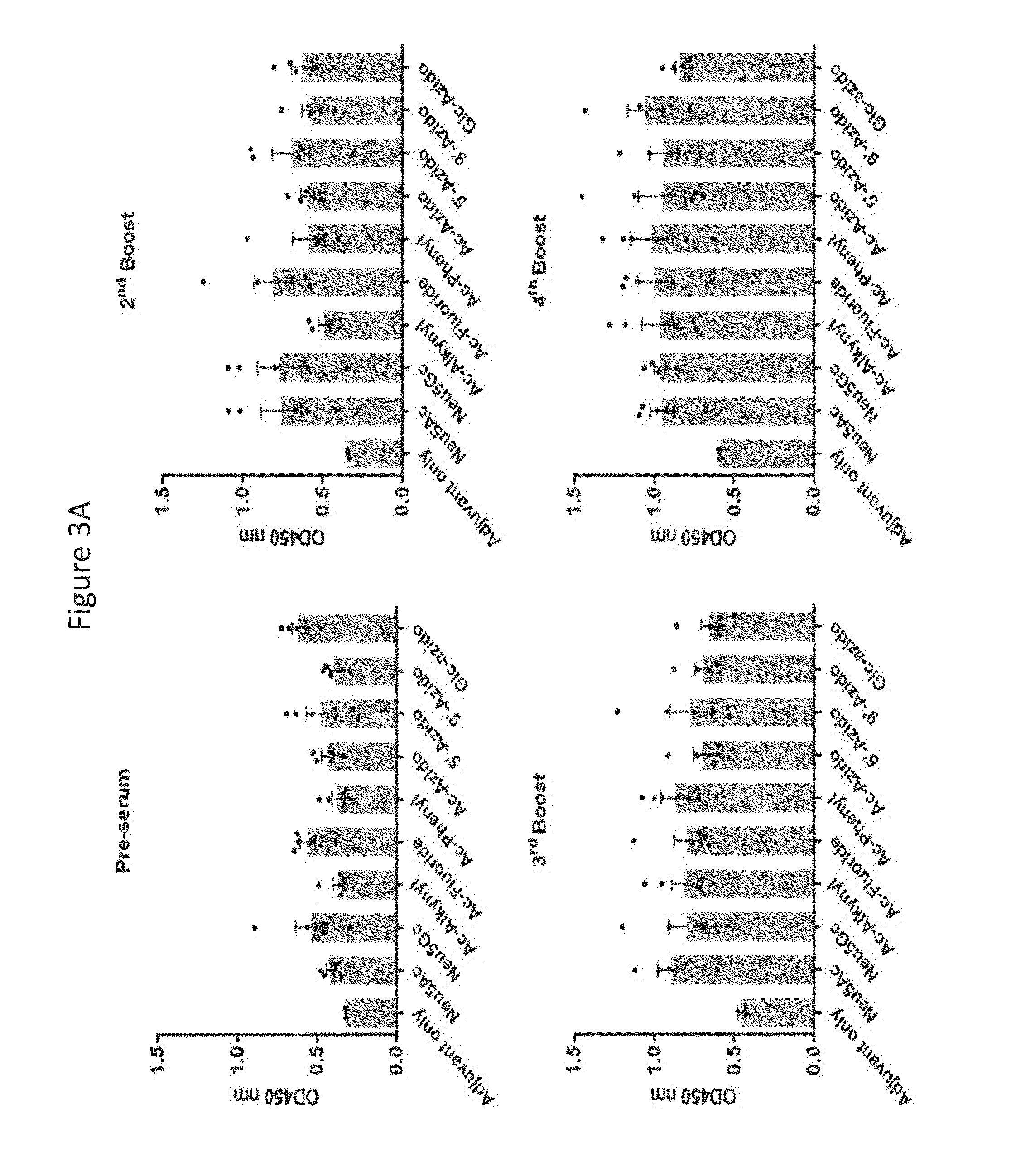Novel glycan conjugates and methods of use thereof
a glycan and conjugate technology, applied in the field of glycan conjugate, can solve the problems of poor immunogenicity of most tumor-associated carbohydrate antigens, and the inability of two vaccines to elicit robust t cell-dependent immune responses in patients, so as to reduce tumor size, prevent metastasis, and eliminate malignant cells
- Summary
- Abstract
- Description
- Claims
- Application Information
AI Technical Summary
Benefits of technology
Problems solved by technology
Method used
Image
Examples
example 1
Exemplary Syntheses of SSEA3 Analogues
[0221]A: Chemo-Enzymatic Synthesis of SSEA3 Analog-NH2
[0222]The combined compounds Gb4 analog, ATP, UTP, galactose analog, phosphoenolpyruvate, MgCl2 with enzymes galactokinase (GalK), UDP-sugar pyrophosphorylase (AtUSP), beta-1,3-galactosyltransferase (LgtD,), pyruvate kinase (PK), and inorganic pyrophosphatase (PPA) in the solution, and the reaction was initiated at room temperature with the pH controlled at 7.0, and the reaction was monitored by TLC until no more product could be observed. After completion of the reaction, the proteins in the reaction mixture were removed by heating for 30 min followed by centrifugation and filtration with 0.22 μM filter. The filtrate was then purified by C-18 gel chromatography. Fractions were collected and monitored by TLC.
example 2
Exemplary Syntheses of SSEA4 Analogues
[0223]A: Chemical Synthesis of SSEA4-Gc-NH2
[0224]Powdered molecular sieves (4 A, 0.5 g) was added to a solution of acceptor 3 (93 mg, 0.045 mmol) and imidates 6 (76 mg, 0.068 mmol) in 6 mL of dichloromethane (CH2Cl2). The mixture was stirred at room temperature for 2 hrs. After cooled to −10° C., TMSOTf (5 μL, 0.03 mmol) was added, and the mixture was stirred at 5° C. (cold room) overnight. The reaction mixture was quenched by the addition of triethylamine (0.5 mL), diluted with CH2Cl2 and filtered through a pad of celite. The filtrate was washed with saturated sodium bicarbonate (NaHCO3) aqueous solution, dried over sodium sulfate (Na2SO4), filtered, and concentrated. The residue was purified by flash silica gelchromatography (50-100% EtOAc in Hexane) to afford hexasaccharide 7 contaminated with impurities from disaccharide imidates 6. The yield was determined by NMR (90 mg, 68%).
[0225]Zinc dust (1 g) was added to a solution of hexasaccharide 7...
example 3
Synthesis of SSEA3 / SSEA4 Analog CRM197-Conjugates Via Sulfo-EMCS Crosslink
[0307]
[0308]General Methods:
[0309]Step A. To modify SSEA3 analog-NH2 or SSEA4 analog-NH2 into SSEA3 analog-SH or SSEA4-analog-SH
[0310]To synthesize SSEA3 / 4 analog CRM197-conjugates, the amine-terminated SSEA3 / 4 analogs were reacted with the DTSSP linker in PBS buffer (pH 7.4) at room temperature. To monitor the pH value of solution by pH paper, and add some NaOH solution to the solution when the solution became neuter or acid. After the reaction was stirred at room temperature for 12 hours, DTT was added to the solution at room temperature. The solution was kept stirring at 40° C., and then the solvent was removed under reduced pressure. The residue was purified by LH-20 column chromatography to give SSEA3 / 4 analog-SH.
[0311]Step B: To modify CRM197 into CRM197-maleimide.
[0312]After the salt of commercial CRM197 (1.0 mg) was removed via alternate dissolving in water and dialyzing (Amicon Ultra-0.5, 10 kDa,), th...
PUM
| Property | Measurement | Unit |
|---|---|---|
| time | aaaaa | aaaaa |
| pH | aaaaa | aaaaa |
| pH | aaaaa | aaaaa |
Abstract
Description
Claims
Application Information
 Login to View More
Login to View More - R&D
- Intellectual Property
- Life Sciences
- Materials
- Tech Scout
- Unparalleled Data Quality
- Higher Quality Content
- 60% Fewer Hallucinations
Browse by: Latest US Patents, China's latest patents, Technical Efficacy Thesaurus, Application Domain, Technology Topic, Popular Technical Reports.
© 2025 PatSnap. All rights reserved.Legal|Privacy policy|Modern Slavery Act Transparency Statement|Sitemap|About US| Contact US: help@patsnap.com



